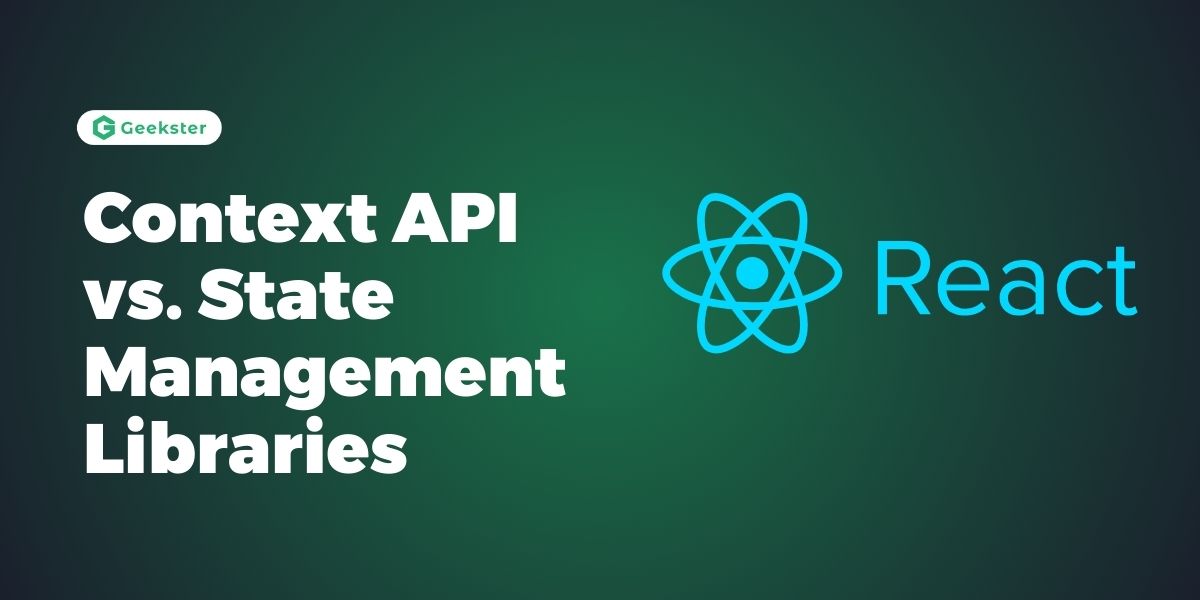Introduction:
In React applications, managing application state effectively is crucial for building dynamic and responsive user interfaces. Two popular approaches emerge: the built-in Context API and external state management libraries. But when should you use one over the other? Let’s delve into their strengths and weaknesses to guide your decision.
Context API:
The Context API provides a way to pass data through the component tree without explicitly passing props down through every level. This is particularly useful for:
- Sharing Global State: If you have data that needs to be accessed by multiple components at various levels of the component hierarchy, Context API can simplify data flow.
- Avoiding Prop Drilling: Context API eliminates the need to pass props down through numerous nested components, making your code cleaner and easier to maintain.
Pros:
- Lightweight and Built-in: No additional libraries are required.
- Simple for Sharing Global or Semi-Global State: Straightforward approach for passing data across components.
Cons:
- Not a Full-fledged State Management Solution: Lacks features like complex state updates, actions, and reducers.
- Potential Overuse: Overusing Context API for minor data sharing can lead to tightly coupled components and hinder maintainability.
- Limited Developer Tools Support: Testing components that rely on Context can be more challenging compared to state management libraries.
State Management Libraries:
State management libraries like Redux, MobX, or Zustand offer a more structured approach to managing application state. They provide features like:
- Single Source of Truth: A centralized store holds the entire application state, promoting consistency and easier debugging.
- Predictable State Updates: State updates are handled through actions and reducers, ensuring predictable and testable state transitions.
- Advanced Features: Many libraries offer features like middleware for asynchronous actions, time travel debugging, and developer tools integration.
Pros:
- Scalable for Complex Applications: Ideal for managing intricate state logic with multiple components and interactions.
- Improved Developer Experience: Libraries often provide developer tools and patterns that enhance debugging and maintainability.
- Structured State Updates: Actions and reducers make state updates predictable and easier to reason about.
Cons:
- Learning Curve: Understanding and implementing these libraries requires additional learning compared to Context API.
- Overhead: Introducing a state management library adds complexity and potential overhead to your project.
Conclusion:
Both Context API and state management libraries serve different purposes. Understanding their strengths and weaknesses allows you to select the most appropriate tool for your React application’s needs. Remember, Context API is a built-in, lightweight solution for basic data sharing, while state management libraries offer a more structured and scalable approach for complex applications. Choose wisely to create well-organized and maintainable React applications.
Frequently Asked Question
Context API: It’s a built-in feature of React for passing data through the component tree without prop drilling. Use it for simpler state management needs within a component tree where global state isn’t necessary, or when managing a few pieces of shared state.
Complex State: Consider using Redux or similar when managing complex state that involves multiple components, asynchronous operations, or complex state transformations.
Global State: When you need a single source of truth for state across the entire application, Redux centralized store simplifies management and debugging.
Performance: Context updates can trigger unnecessary re-renders of consuming components unless optimized with techniques like memoization or React.memo.
Scalability: It may not be suitable for managing complex or deeply nested state across large applications due to potential performance issues and lack of advanced features.

